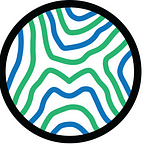Team Avoin — how to find suitable places for coral restoration
The following article covers the work of team Avoin from the challenge of “Coral Reefs S.O.S.” part of the third Mothership Mission titled The Big Blue. For more info on the program visit the website.
Coral bleaching is a global issue arising from the increased harmful impact of human activities on ocean habitats. This phenomenon is prominent in Costa Rica, where efforts are made to restore coral reefs in order to sustain diverse life underwater. While rising water temperatures set their own difficulty in reviving coral reefs, sedimentation due to i.e agriculture and forestry is one of the biggest causes of coral bleaching.
With a proper analysis of sedimentation data, it is possible to improve the success rate of coral restoration projects such as Raising Coral Costa Rica. This is the challenge Team Avoin was called to find a solution to during the 8-week program by Mothership Missions and Copernicus Hackathons.
Team Avoin builds upon Avoin Association, an organization for creating digital products for a sustainable future. The members include Otso Valta, product manager, Tuula Turunen, project manager, Petja Valkama, programmer, and outside Avoin Association support Elias Kunnas, a data scientist. We are passionate about making the world a better place to live in. The way we see it, protecting corals is essential to sustaining the natural diversity that defines our unique planet.
Prior to the hackathon, we have developed an environmental monitoring tool called Avoin Map, which is designed for both individuals and companies working in the fields of agriculture and forestry, to name a few. During the program, we used Avoin Map as a reference for our prototype. Additionally, thorough research on the topics of corals, sedimentation, and ocean monitoring was conducted, as well as multiple interviews with the challenge owner RCCR. We also received helpful mentoring from Mothership Missions.
surrounding Puntarenas in Costa Rica.
As a result, we have developed a sedimentation monitoring tool designed to make it easier to find suitable places for coral restoration. Currently, the tool is simply called the sediment map. It uses a cloudless up-to-date Copernicus base map and includes 3,500 panchromatic Landsat cloudless satellite images from the time period of 1985–2020, covering Costa Rica in its entirety. The images are stored in Google cloud and saved in cache for a seamless display.
show the difference in sedimentation cloud formations.
With the tool, we wish to support organizations such as RCCR in their efforts of preserving marine ecosystems vital to the diversity of our planet. We also believe the tool to be useful for organizations protecting cultures such as mangrove forests and seagrass meadows and intend to develop it further for such purposes. This advances Team Avoin´s long term goal of establishing a Blue Carbon crediting program that will include organizations from various fields of marine life.
Written By: Otso Valta and Tuula Turunen
Team Avoin participated in the challenge co-organized with Rising Corals Costa Rika.
The Mothership is an open innovation program helping teams to develop a proof of concept and business model for solutions related to the Sustainable Development Goals. The program is co-organized by AI Lab One, Space4Good, and WorldStartup.
